Abstract
An outbreak of n-hexane polyneuropathy as a result of industrial exposure occurred in printing factories in Taipei area from December 1983 to February 1985. Multimodality evoked potentials study was performed on 22 of the polyneuropathy cases, five of the subclinical cases, and seven of the unaffected workers. The absolute and interpeak latencies of patterned visual evoked potential (pVEP) in both the polyneuropathy and subclinical groups were longer than in the normal controls. The pVEP interpeak amplitude was also decreased in the polyneuropathy cases. Brainstem auditory evoked potentials (BAEP), showed no difference of wave I latency between factory workers and normal controls, but prolongation of the wave I-V interpeak latencies was noted, corresponding with the severity of the polyneuropathy. In somatosensory evoked potentials (SEPs), both the absolute latencies and central conduction time (CCT) were longer in subclinical and polyneuropathy cases than in the unaffected workers and normal controls. From this evoked potentials study, chronic toxic effects of n-hexane on the central nervous system were shown.
Full text
PDF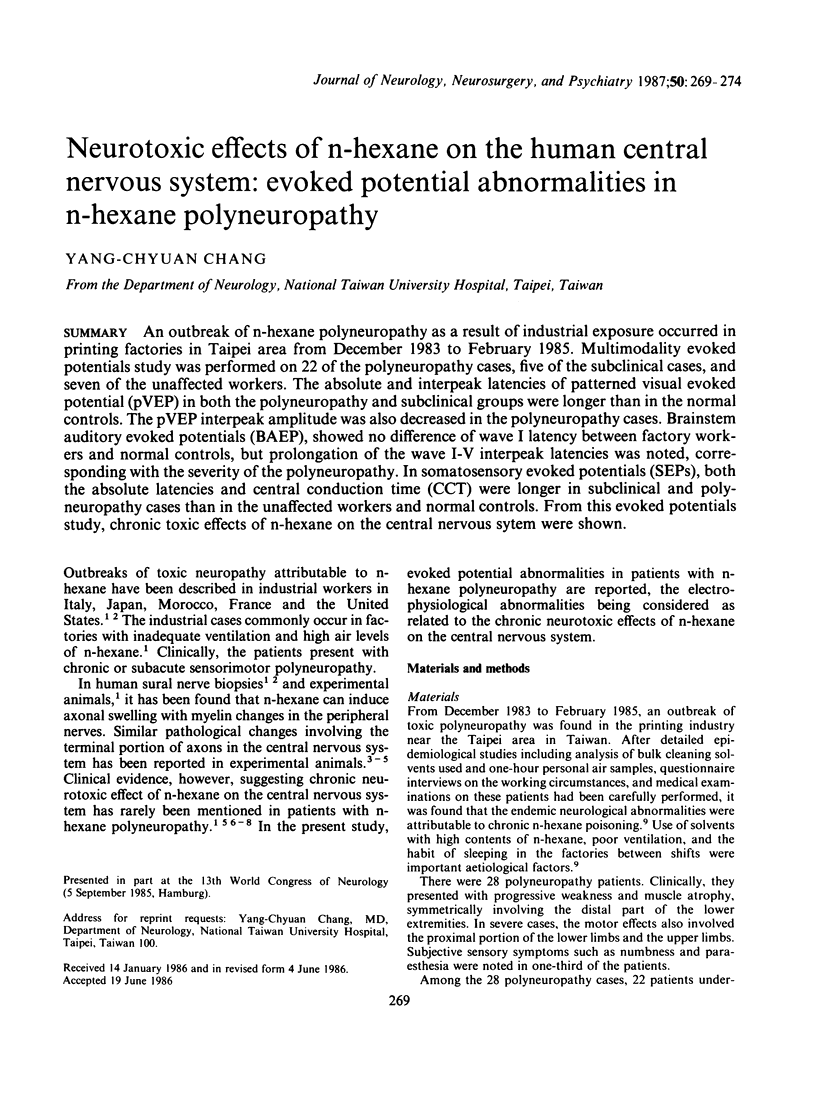

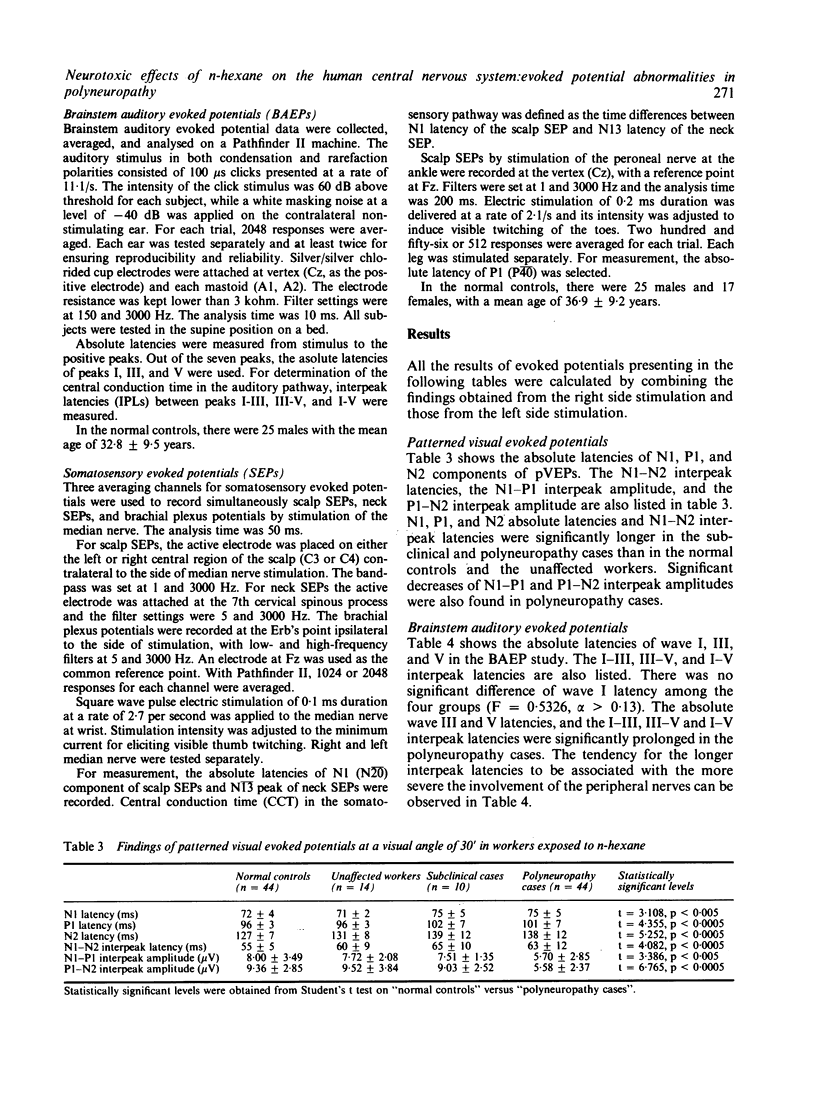
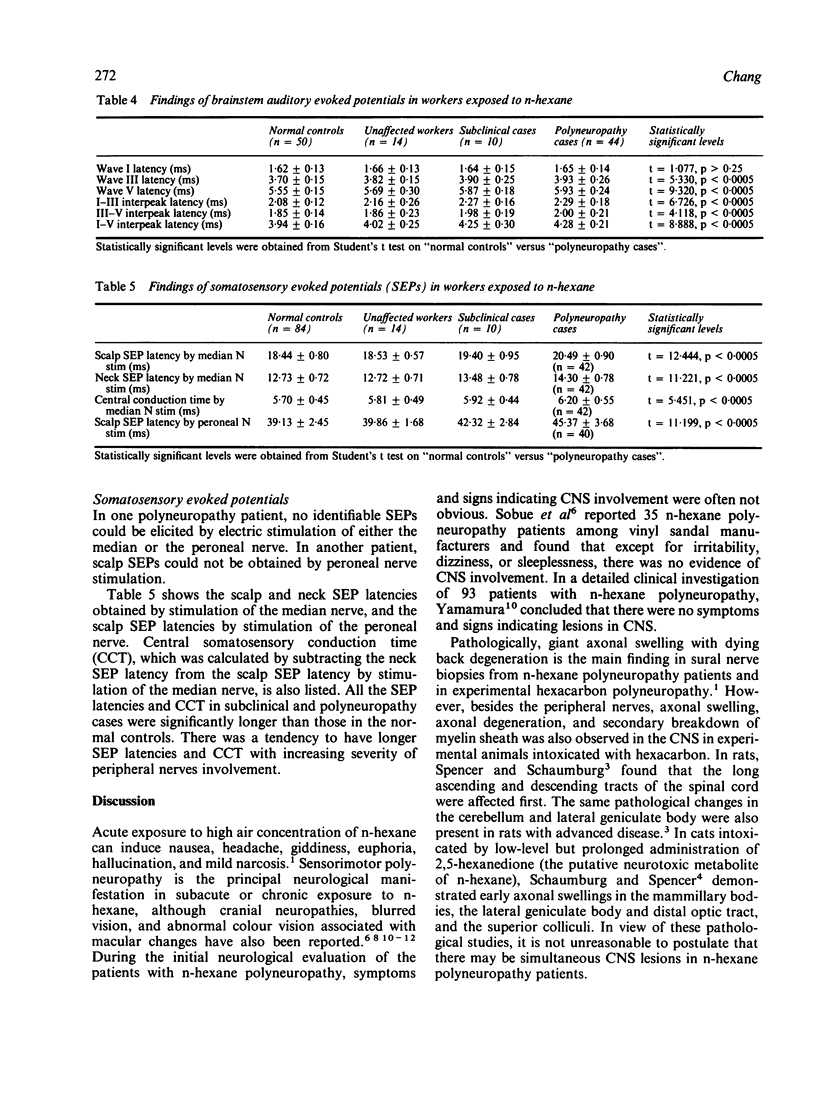
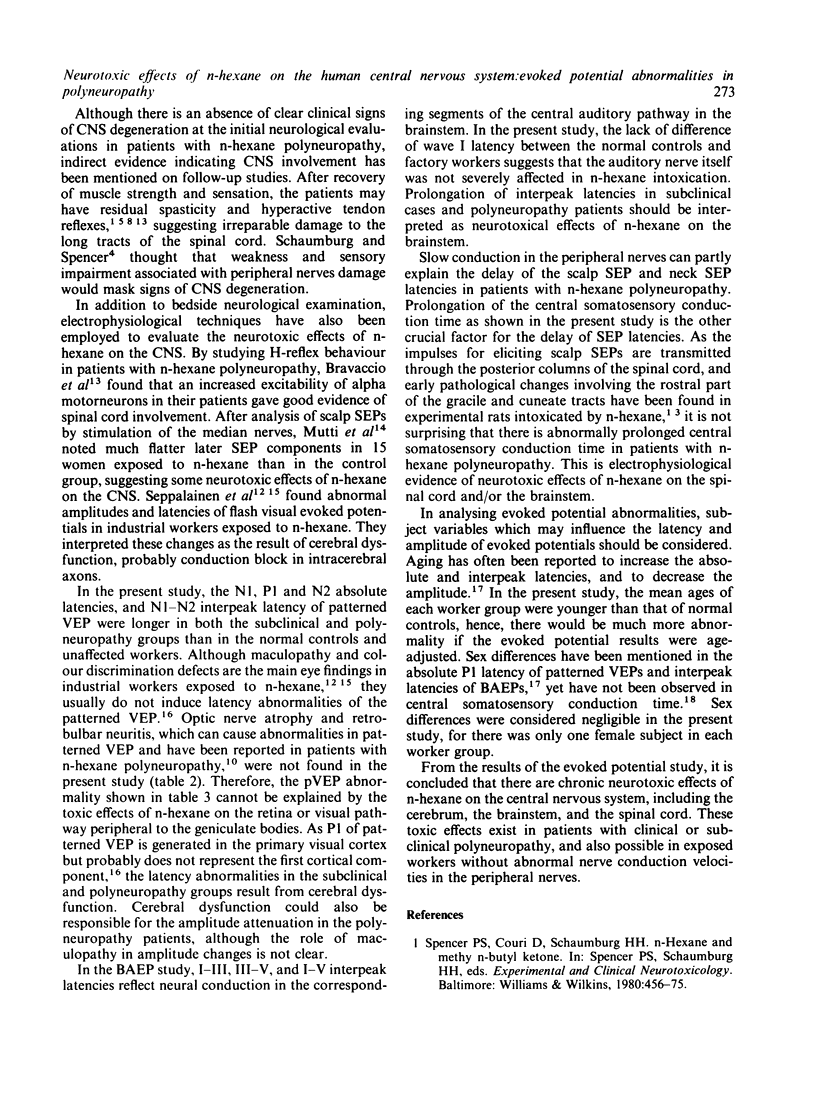
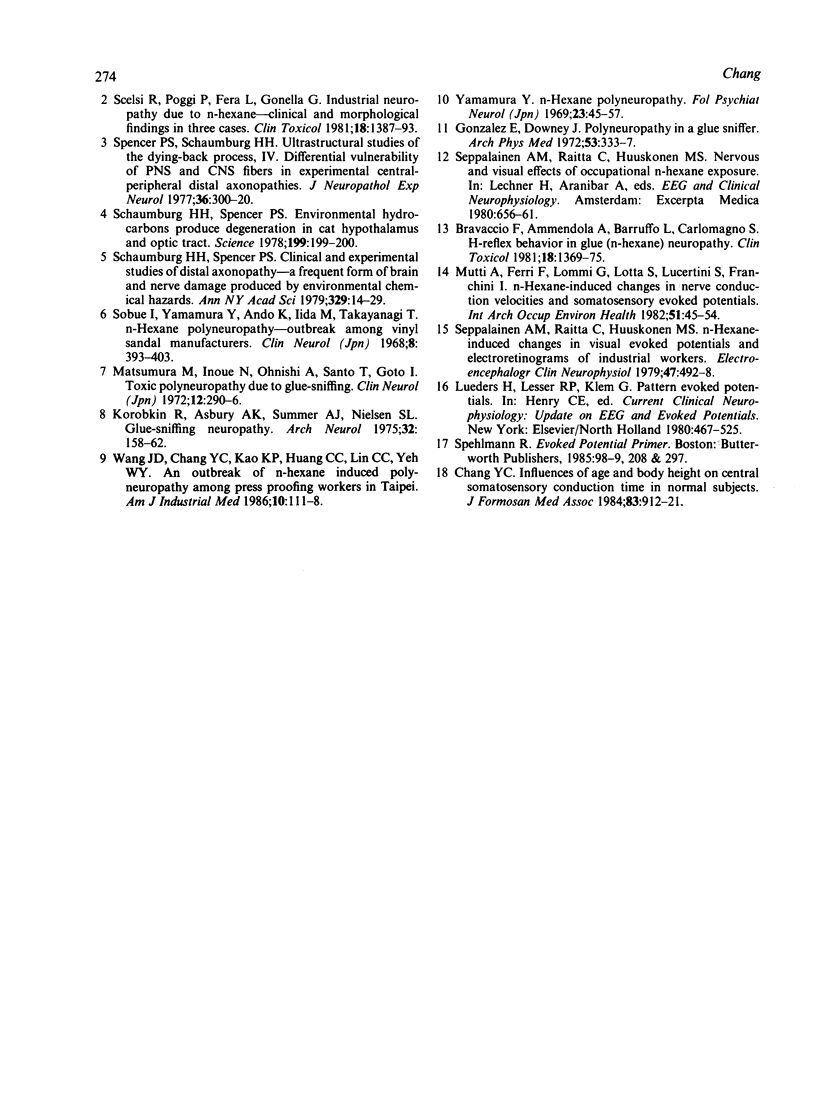
Selected References
These references are in PubMed. This may not be the complete list of references from this article.
- Bravaccio F., Ammendola A., Barruffo L., Carlomagno S. H-reflex behavior in glue (n-hexane) neuropathy. Clin Toxicol. 1981 Dec;18(12):1369–1375. doi: 10.3109/15563658108990345. [DOI] [PubMed] [Google Scholar]
- Chang Y. C. Influences of age and body height on central somatosensory conduction time in normal subjects. Taiwan Yi Xue Hui Za Zhi. 1984 Sep;83(9):912–921. [PubMed] [Google Scholar]
- Gonzalez E. G., Downey J. A. Polyneuropathy in a glue sniffer. Arch Phys Med Rehabil. 1972 Jul;53(7):333–337. [PubMed] [Google Scholar]
- Korobkin R., Asbury A. K., Sumner A. J., Nielsen S. L. Glue-sniffing neuropathy. Arch Neurol. 1975 Mar;32(3):158–162. doi: 10.1001/archneur.1975.00490450038004. [DOI] [PubMed] [Google Scholar]
- Mutti A., Ferri F., Lommi G., Lotta S., Lucertini S., Franchini I. n-Hexane-induced changes in nerve conduction velocities and somatosensory evoked potentials. Int Arch Occup Environ Health. 1982;51(1):45–54. doi: 10.1007/BF00378409. [DOI] [PubMed] [Google Scholar]
- Scelsi R., Poggi P., Fera L., Gonella G. Industrial neuropathy due to n-hexane. Clinical and morphological findings in three cases. Clin Toxicol. 1981 Dec;18(12):1387–1393. doi: 10.3109/15563658108990347. [DOI] [PubMed] [Google Scholar]
- Schaumburg H. H., Spencer P. S. Environmental hydrocarbons produce degeneration in cat hypothalamus and optic tract. Science. 1978 Jan 13;199(4325):199–200. doi: 10.1126/science.413192. [DOI] [PubMed] [Google Scholar]
- Seppäläinen A. M., Raitta C., Huuskonen M. S. n-Hexane-induced changes in visual evoked potentials and electroretinograms of industrial workers. Electroencephalogr Clin Neurophysiol. 1979 Oct;47(4):492–498. doi: 10.1016/0013-4694(79)90165-2. [DOI] [PubMed] [Google Scholar]
- Spencer P. S., Schaumburg H. H. Ultrastructural studies of the dying-back process. IV. Differential vulnerability of PNS and CNS fibers in experimental central-peripheral distal axonopathies. J Neuropathol Exp Neurol. 1977 Mar-Apr;36(2):300–320. doi: 10.1097/00005072-197703000-00006. [DOI] [PubMed] [Google Scholar]
- Wang J. D., Chang Y. C., Kao K. P., Huang C. C., Lin C. C., Yeh W. Y. An outbreak of N-hexane induced polyneuropathy among press proofing workers in Taipei. Am J Ind Med. 1986;10(2):111–118. doi: 10.1002/ajim.4700100202. [DOI] [PubMed] [Google Scholar]
- Yamamura Y. n-Hexane polyneuropathy. Folia Psychiatr Neurol Jpn. 1969;23(1):45–57. doi: 10.1111/j.1440-1819.1969.tb01441.x. [DOI] [PubMed] [Google Scholar]


